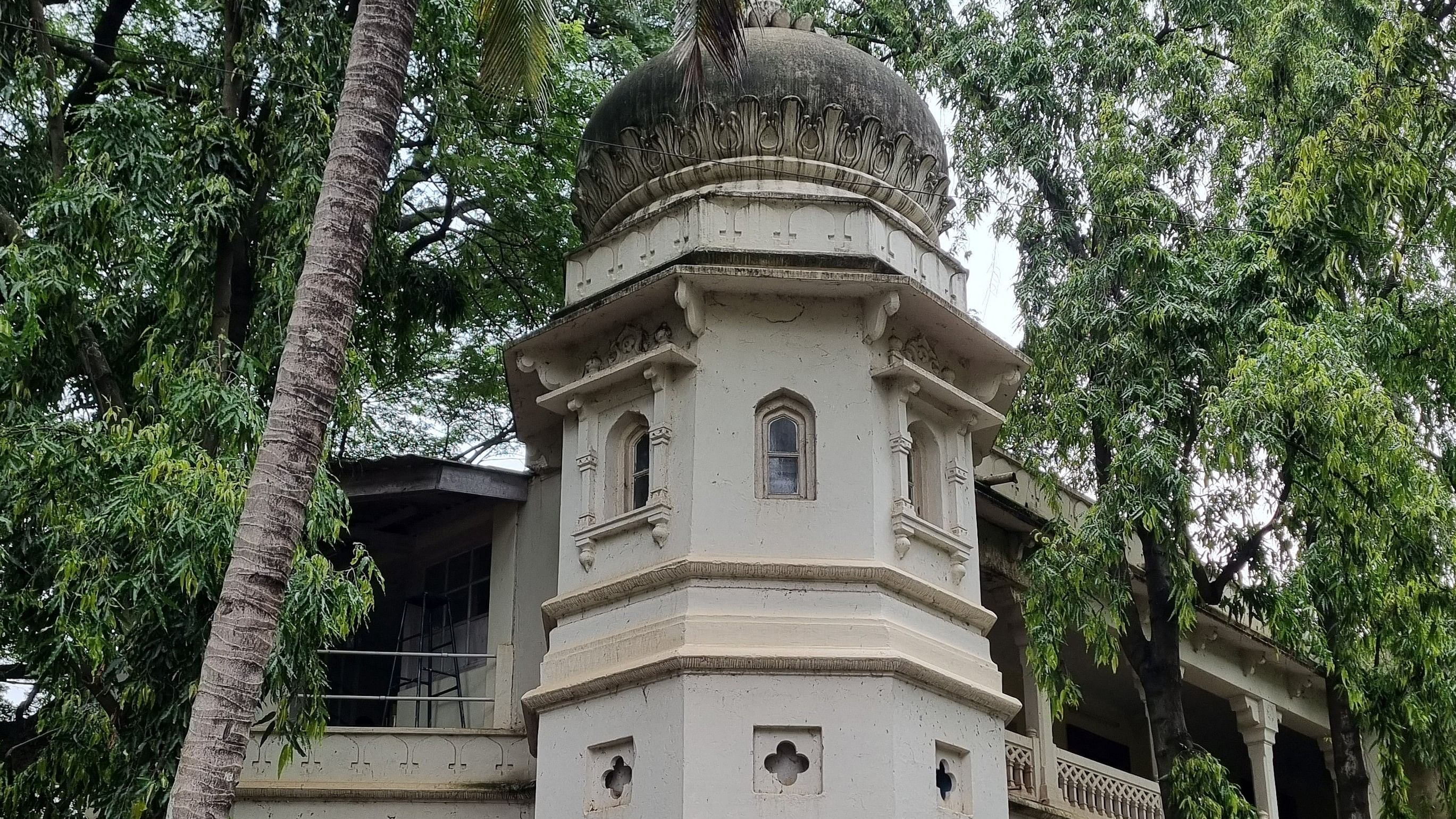
The Isolation Hospital building, which displays several Indo-Saracenic features.
Credit: Photos by Lester Silveira
Having recently emerged scathed from the pandemic, we are now quite conversant with terms like ‘isolation’ and ‘infectious’. The old Isolation Hospital on Bengaluru’s Old Madras Road is a relic of a similar moment about a century ago.
Bengaluru in the mid-1920s had just recovered from the Spanish influenza. At the time, the city had two hospitals to deal with infectious diseases. Bengaluru city, under the Maharaja’s government, had the Epidemic Diseases Hospital on Magadi Road, where the Leprosy Hospital stands today. In the Civil and Military Station (CMS), the Isolation Hospital was in today’s tony neighbourhood near Berlie Street in Langford Town!
These two hospitals had battled through the flu and through the plague before that, but by the 1920s, both were in poor condition. So poor, that patients were reported to avoid them. Meanwhile, though the worst seemed to be over, plague still resurfaced periodically. And other infectious diseases like diphtheria, smallpox and chickenpox were ever-present scourges.
Accordingly, the CMS administration decided to build a new isolation hospital. The funds for the new establishment came partly from the CMS administration itself and partly from the government of India. Some money was also later recovered from the sale of the old isolation hospital buildings and land in Langford Town.
Credit: Photos by Lester Silveira
Separate wards
Construction began around 1927 and by 1929, the Isolation Hospital opened in its new location on Old Madras Road, at a spot hugging the eastern boundary of the CMS. As a facility meant for people suffering from highly infectious diseases, it was suitably distant from most of the population. And taking full advantage of the slope of the land, the buildings were built looking west onto the once-vast Binnamangala kere nearby.
Initially, the facilities comprised two identical but separate wards for Europeans and Indians. Each ward had its own nurses’ stations, cold rooms, stores and other such spaces. The two wards also had separate kitchens. Between the wards was a small garden. A two-storeyed administrative building was connected to each of the two wards by curved, covered passages. Narrow spiral staircases at each end of the administrative block led to the nurses’ quarters on the upper floor. A small bungalow behind the building housed the medical officer in charge.
The administrative building bears a striking resemblance to Russell Market in Bengaluru. Like in the market, the central entrance to the hospital’s administrative block is emphasised with piers, each topped with small domes. Domes mark the end of each wing. The ground floor has arched openings with jalis or screens in the upper part of the arches.
In fact, when the CMS administration had requested the government of India for funds, bureaucrats in Delhi had voiced a concern. Did an isolation hospital have to be so ornate, they asked. To this, W H Murphy, municipal executive engineer of the CMS, responded that this was how many public buildings in Bengaluru now looked. Of course, Murphy neglected to mention that he himself had built many of those buildings that he was referencing.
The Isolation Hospital, Russell Market and Johnson Market in Bengaluru, all designed by Murphy between 1927 and 1929, are quite distinctive in style. Few buildings in the CMS built before this trio show any attempt at ‘Indianisation’. What prompted Murphy’s sudden turn towards the Indo-Saracenic for these three? Was he, perhaps, influenced by the work of Edwin Lutyens and Herbert Baker in Delhi, which was lavishly chronicled in newspapers at this same time?
The building is interesting also for some construction techniques. Lester Silveira, an architect working with INTACH, Bengaluru chapter, has been studying the heritage building for some months. “We see early examples of concrete in the construction here,” he explains. “For instance, the thin cement concrete overhangs over the windows which, up until then, were usually made in stone. In some other places in the building, slabs were cast using minimal reinforcement. These are in accordance with the construction technology of the time period of the building.”
Credit: Photos by Lester Silveira
The heritage building no longer functions as an isolation hospital. It now houses the Ramalingaswami Centre on Equity and Social Determinants of Health, a part of the Public Health Foundation of India.
Around 2010, Bangalore Metro Rail Corporation acquired a portion of the land and demolished a small part of one ward to build the Swami Vivekananda Metro Station. In exchange, BMRCL built a new hospital building in the same premises. During the pandemic, this new Epidemic Diseases Hospital served as a quarantine facility.
(Meera Iyer is a writer, independent researcher and the convenor of INTACH Bengaluru Chapter.)